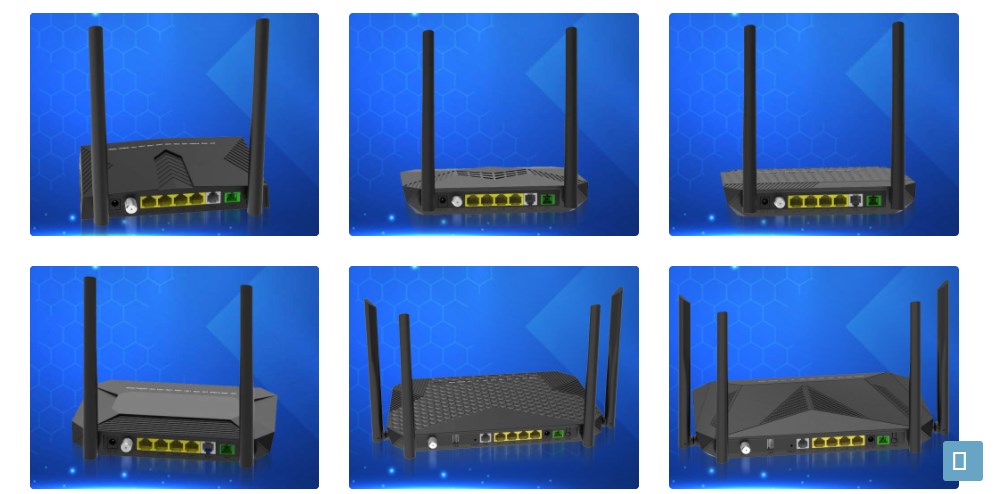The EPON network adopts the FTTB method to form the network, and the basic unit of the network is the OLT and the ONU. OLT provides abundant PON ports for central office equipment to connect ONU equipment; ONU is user equipment that provides corresponding data and voice interfaces to realize user service access. For the access implementation of different services, different users and different services are marked with different VLAN tags to transparently transmit to the corresponding service access server, and the corresponding VLAN tags are stripped and sent to the IP bearer network for transmission.
1. EPON network introduction
EPON (Ethernet Passive Optical Network) is an emerging optical fiber access network technology. It adopts point-to-multipoint structure, passive optical fiber transmission mode, based on high-speed Ethernet platform and TDM time division MAC (Media Access Control) media access control mode. , Broadband access technology that provides a variety of integrated services. The so-called “passive” means that the ODN does not contain any active electronic devices and power supplies, and is composed of passive devices such as optical splitters (Splitter). It adopts PON technology in the physical layer, uses the Ethernet protocol in the link layer, and realizes the access of Ethernet by using the topology structure of PON. Therefore, it combines the advantages of PON technology and Ethernet technology: low cost, high bandwidth, strong scalability, flexible and fast service reorganization, compatibility with existing Ethernet, easy management and so on.
EPON can realize the integration of voice, data, video and mobile services. The EPON system is mainly composed of OLT (optical line terminal), ONU (optical network unit), ONT (optical network terminal) and ODN (optical distribution network). enter.
Active network equipment includes central office rack equipment (OLT) and optical network unit (ONU). Optical Network Units (ONUs) provide users with the interface between data, video and telephony networks and the PON. The original function of the ONU is to receive the optical path signal and then convert it into the format required by the user (Ethernet, IP broadcasting, telephone, T1/E1, etc.). The OLT equipment is connected to the IP core network through optical fibers. The introduction of the optical access network, its coverage reaches 20km, ensures that the OLT can be upgraded to the traditional metro convergence node from the initial stage of the optical access network construction, thereby simplifying the network structure of the access network convergence layer and saving energy. the number of end offices. In addition, the characteristics of large capacity, high access bandwidth, high reliability, and multi-service QoS level support capability of the optical access network also make the evolution of the access network into a unified, converged, and efficient bearing platform a reality.
2. The basic principle of EPON network
The EPON system uses WDM technology to realize single-fiber bidirectional transmission, using the uplink 1310nm and downlink 1490nm wavelengths to transmit data and voice, while CATV services use the 1550nm wavelength to carry. The OLT is placed at the central office end to distribute and control the connection of the channel, and has real-time monitoring, management and maintenance functions. The ONU is placed on the user side, and the OLT and the ONU are connected in a 1:16/1:32 mode through a passive optical distribution network.
In order to separate the round-trip signals of multiple users on the same fiber, the following two multiplexing techniques can be used.
1) The downlink data stream adopts broadcasting technology. In EPON, the process of downstream data transmission from the OLT to multiple ONUs is sent by means of data broadcasting. Data is broadcast downstream from the OLT to multiple ONUs in the form of variable-length packets. Each information packet has an EPON header, which uniquely identifies whether the information packet is sent to ONU-1, ONU-2 or ONU-3. It can also be identified as a broadcast packet to all ONUs or to a specific ONU group (multicast packets). When the data arrives at the ONU, the ONU receives and recognizes the information packets sent to it through address matching, and discards the information packets sent to other ONUs. After the ONU is registered as active, a unique LLID is allocated; when the OLT receives data, it compares the LLID registration list. When the ONU receives data, it only receives frames or broadcast frames that match its own LLID.
2) The upstream data stream adopts TDMA technology. The OLT compares the LLID registration list before receiving data; each ONU sends data frames in the time slot uniformly allocated by the central office equipment OLT; the allocated time slot (through ranging technology) compensates for the distance difference between each ONU and avoids each ONU collision between.
https://720yun.com/t/d3vkbl8hddl?scene_id=86634935
https://www.smart-xlink.com/products.html







